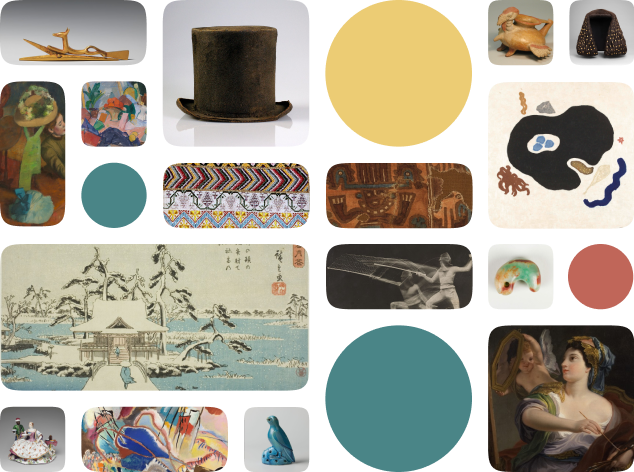Rosary
Creator Name
Cultural Context
Date
Source
About the Work
In the Renaissance, memento mori imagery was used as a device to communicate Christian beliefs. Morbid depictions of skulls and decay were intended to remind the viewer of their mortality. In the instance of rosary beads, wearers were reminded to pray and seek salvation.
Rosaries can be strings of beads or knots used to count prayers or aid in meditation. Intricately carved ivory beads were especially popular in 16th-century Europe among elites. Each bead on this German rosary depicts a grouping of symbols that signify the fragility of life. Meant to warn against a pleasure-driven life, rosaries like this became luxury items.
Rosaries can be strings of beads or knots used to count prayers or aid in meditation. Intricately carved ivory beads were especially popular in 16th-century Europe among elites. Each bead on this German rosary depicts a grouping of symbols that signify the fragility of life. Meant to warn against a pleasure-driven life, rosaries like this became luxury items.
Metropolitan Museum of Art Object Description
Rosary
Work details
"--" = no data available
Title
Creator
Worktype
Cultural Context
Material
Dimensions
Technique
Language
--
Date
Provenance
Style Period
Rights
Inscription
Location
--
Source
Subjects
Topic
--
Curationist Contributors
Related Content
All Works in Curationist’s archives can be reproduced and used freely. How to attribute this Work:
Unknown, Rosary, circa 1500-1525. Metropolitan Museum of Art. Each bead on this rosary depicts a grouping of symbols that signify the fragility of life. Public Domain.
Help us improve this content!
Let our archivists know if you have something to add.
Save this work.
Start an account to add this work to your personal curated collection.
